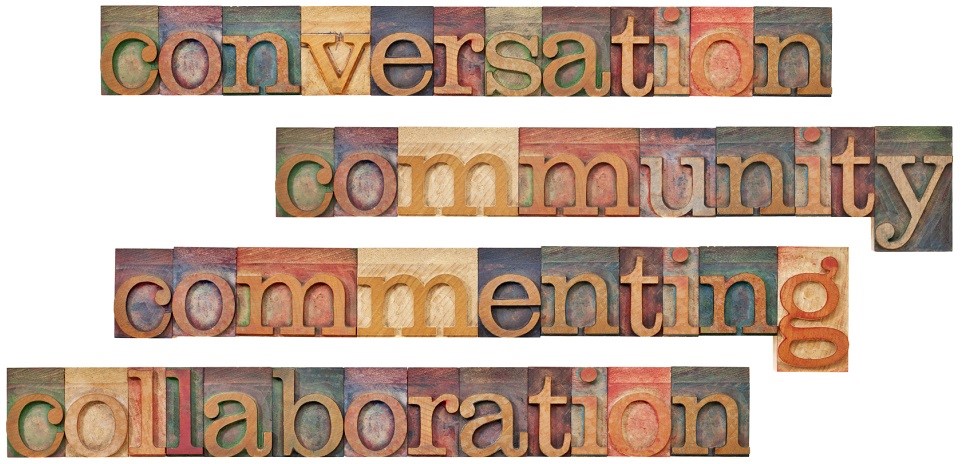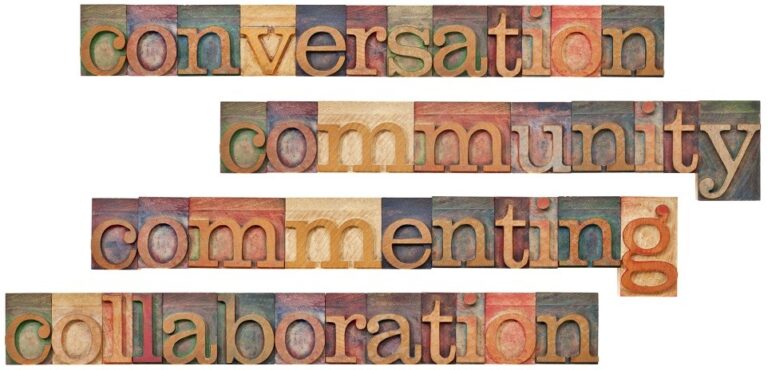
“Why there are so many nice people here?”
That was the top question on the Salesforce Success Community Answers page last month. This is the on-line hub for Salesforce.com people – a place for partners, customers, users, to go and interact as a group. Out of the 31 replies to the question, the one that got voted to the top by a long margin, was from Steve Molis, Salesforce.com MVP (most valued player/most valuable professional) and by all accounts, all round good guy. This is what he said.
“Because it’s just the right thing to do and the right way to treat someone. People come here with their Salesforce questions, some of us have some Salesforce knowledge that can help them find the answer they are looking for, or at least help them get pointed in the right direction.
“It’s no different than if I had a wristwatch and someone walked up to me and asked ‘Excuse me, do you know what time it is?’ I mean how could I not help that person??? They’re asking for information, and I have that information. How could I simply walk away without giving them the time of day? I just can’t do that to someone, that’s my ‘Why?’”
That’s at once a rather straightforward, but powerful example of a community working the way it should. It’s worth taking a look at what’s going on here – how it works and the ideas are that underpin the community.
There are some seriously valuable lessons to be learned here in terms of building incredible customer engagement and with it, a better business.
Salesforce.com success community is accessible from the Salesforce.com homepage, clearly signposted on the top nav bar. Much of the information is publicly available without a Salesforce login. It’s easy to find and given just the same prominence as company’s products & services.
Once you are in there, you’ve arrived at a dedicated community destination. There are a number of options available to you:-
The people who frequent these pages are users, customers, developers, Salesforce employees, partners – in brief the wider Salesforce ecosystem, or in other words, community. And these are the people generating the majority of the content – answering the questions, uploading the files, reporting the issues.
That is the people answering the questions are not Salesforce.com’s helpdesk, but the community at large.
Customers, partners, people just like you or me, like Steve Molis, taking time out to help out others, signpost them to relevant content areas, welcome them to Salesforce and generally make the whole thing happen. Which, when you think about it, is a fairly incredible thing.
“We are all in this together!”
“We all love to pay-it-forward”
“The Salesforce community is the gift that keeps on giving”
“This is where I came when I was lost”
Or as one person commented;
“OK, when do I take the oath and join the cult? You guys are too nice and you like Salesforce too much…”
This kind of evangelism is not unique, or even recent: Harley Davidson, Apple – two examples of businesses who have created a deep kinship with their customers. It’s just that these are not sentiments usually associated with a business technology platform.
So how did this come about? The answer lies in the founding principles of the company – trust is everything. In the earliest days, Salesforce found themselves in hot water with their customers over the reliability of the service – sometimes the platform went down, and with it, went the confidence of their customers.
“I realized that complete transparency was what we needed if we were to restore trust in our company.”
Marc Benioff, CEO Salesforce.com, Behind the Cloud
This was the story behind trust.salesforce.com – real-time information on system performance, up there for all to see.
“Instead of hiding behind our problems, we started educating customers, prospects, and journalists about where they could find the information they needed. Transparency and trust became a strong part of our identity and branding.”
It was the beginnings of the community area that exists today – a place to allow stakeholders to publicly post problems, recommend improvements, voice concerns, and Salesforce.com would commit to resolving these issues, publicly.
It was a brave move for any business – engaging with the public on this level. But the positive results of this culture are there to see – Salesforce.com becomes more robust with each release, and every fix, built with the needs of the user first. And more than that, Salesforce has earned a deep degree of loyalty to their product from a community of converted fans and evangelists.
A culture of listening and responding to customers is what drives and supports the pace of innovation. Most of the big traditional software vendors (think Oracle) release a major update once every 2 or 3 years. Salesforce.com by contrast release a new roll out of their service three times a year. Three times a year! That’s a lot of change to get your head around if you are using the system, and if you are developing on the system, then even more so. Getting a whole load of new toys three times a year it certainly fun, but learning how to play with them can be a challenge.
Again this is where the community steps into the breach. To keep this amount of information in circulation, and the user feedback flowing in for the next iteration, people need to work together.
Or in the words of Salesforce Administrator, Adrielle Robinson,
“It’s such a complex and geek-out-cool process and UI that you are never really ‘in the know’ completely and you need others to keep your head above water. There is camaraderie in that panic and pleasure that comes with going live with a new app, or stepping into part of the org that you never dared enter before.”
In the same way it takes a village to raise a child, it turns out it takes 25 Force.com developers to integrate an interactive Google Map into Salesforce accounts.
Online communities are as old as the Internet. Offline communities are as old as the hills, or as they were originally known….. tribes.
Tribes are very powerful things: the model of a common location, a common goal, a leader and a notion of belonging to something bigger is one that has been repeated over and over again.
“The Beatles didn’t invent teenagers, they merely decided to lead them,”
Seth Godin, The Tribes We Lead, www.sethgodin.com
Put simply, most of us enjoy being part of communities – the old fashioned human kind of community. Perhaps that’s why the Salesforce.com user group programme is booming: 158 user groups in locations worldwide, with more groups starting up all the time. These events are going on every week, and getting great attendance – people getting together, often out of work time, to meet up with other in their area to share, connect and learn about the platform.
It makes great business sense too. If you imagine the sliding scale of engagement with a Twitter follow at one end, right up at the other end of the spectrum is a face-to-face chat. This is the real deal.
“In 2013, we will reclaim our belief that 20 close business contacts trumps 2000 followers. We may keep our networks but we’ll pour our heart into a tight circle.”
Chris Brogan: president of Human Business Works www.chrisbrogan.com
Here at Desynit, we’ve seen this for ourselves at the Salesforce user group we lead in Bristol, Forcewest – real connections, real recommendations, real experiences shared builds a real community. This is the new currency of engagement, not a 0.1% response rate to a news ad or a flash mob. It strengthens all of our businesses in the process.

Matt Brown, Salesforce.com Advocacy Program Manager
So the community has a place, a purpose and an audience. But there is something in addition that keep the whole thing in motion – custodians…..or as they are known at Salesforce, MVPs.
In any given community, some people step up – they are far more actively engaged than others. The rule of thumb on these varying levels of engagement has become known as 90–9–1 principle. That’s to say, only 1% of the community create content, 9% comment, and the remaining 90% of the community lurk, without actively participating.
In the Salesforce.com community this 1% are the people are the ones answering the questions, organising the events, signposting other members to the right content. They are:-
Right at the heart
Inner circle
Evangelists
‘Spirit of the community’
Most Valued Players/Most Valuable Professionals
Salesforce.com has understood and appreciated the huge value this particular 1% bring to their business. Three times a year they announcement of the new round Salesforce MVPs – and officially recognise, and reward their contribution to the community. In their own words,
“This program recognizes exceptional individuals within the Salesforce community for their leadership, knowledge, and ongoing contributions”
The key attributes of the MVP is their level of expertise, their accessibility to other members of the community, leadership skills and their advocacy of the brand. It’s quite a big deal to be a Salesforce MVP.
“Our MVPs are some of the Salesforce Community’s most passionate spokespeople. They advocate the brand; yes, but they also help steer the ship!”
Matt Brown
Aside from the access to answers, support, expertise, knowledge, training information and the opportunity to collaborate, what else can you take away from the Salesforce Success Community? To summarise, two things:-
A constant stream of user feedback = a more robust service and product. Or in the words of Jon Tresko, Salesforce.com Solution Architect,
“I am fully invested in Salesforce, as it’s what I do for a living, so the bigger and more stable this ecosystem is as a whole, the more secure my and my colleagues’ futures.”
“Engaged customers in communities spend 19% more.” University of Michigan
“It’s a numbers game” is dead. It’s an engagement game. Businesses who build communities that people love are building relationships and customer engagement. And with it, long lasting business value.
Take note, this is the future.
Desynit at Dreamforce 13: Listen up Marketing – creating communities people love

Our independent tech team has been servicing enterprise clients for over 15 years from our HQ in Bristol, UK. Let’s see how we can work together and get the most out of your Salesforce implementation.